- Home
- Heating With Wood
- Seasoned Firewood
Seasoned Firewood
This post may contain affiliate links so I earn a commission.
No matter what species of firewood you choose to burn, using seasoned firewood is always the best choice.
In fact, a lot of people are so concerned about BTU's, ashes and coaling qualities they fail to concentrate on the most important characteristic of any firewood.......making sure it's dry!
Since seasoning a piece of firewood can take 1-2 years it's often overlooked and ignored.
However, burning wet or green firewood is not only frustrating, it's also dangerous.
Have you ever thrown a wet log into the fire and watched moisture bubble come out from the ends of the wood as it sizzled and hissed?
Or, have you ever tried to start a fire only to find that it just smolders and smokes but never really takes off?
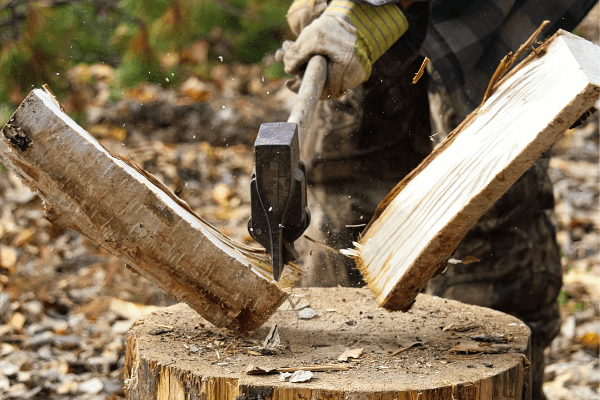
Both of these examples are common with wet firewood.
Here's the real problem.
The fire uses all of its energy during the combustion process to evaporate the moisture before the wood will burn.
The unburnt gasses rise up through your chimney and adhere to the cold chimney walls.
These unburnt gasses stick to the chimney walls forming a dangerous and flammable substance known as creosote.
Creosote is the substance responsible for countless chimney fires each year destroying homes throughout the country.
Moisture In Trees
Seasoned firewood is defined as a piece of wood that contains a moisture content of 20 percent or less.
This is much different than a live tree that can contain up to 45 percent moisture.
Think of a tree as a piece of wood containing bundles of tiny microscopic tubes running from the root system up to the leaves.
These tiny tubes transport moisture throughout the tree, kind of like veins and arteries transport blood throughout the human body.
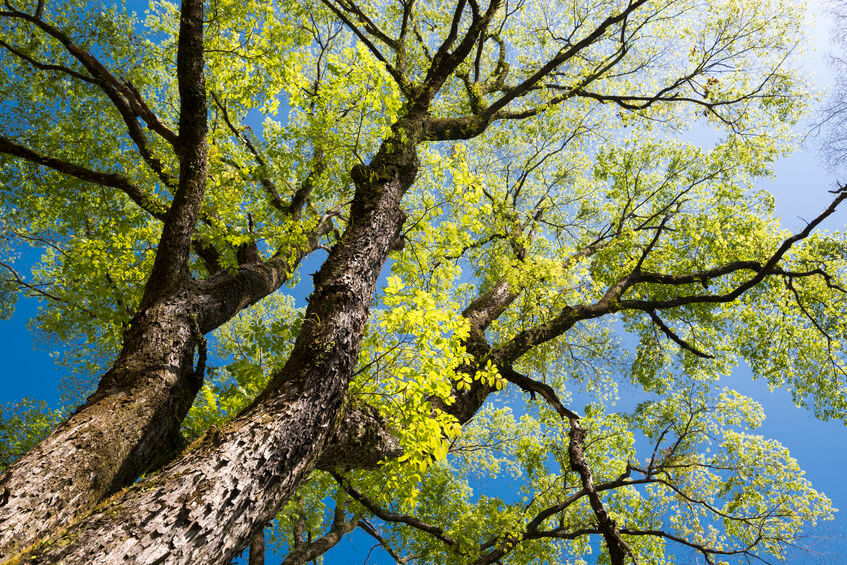
Although a dead standing tree will have less moisture than a live tree, the only way to fully dry out the wood is to cut it, split it and stack it.
When you cut the wood into smaller pieces (usually 16 inches) it allows the moisture to escape from the tiny tubes, reducing the moisture content of the firewood.
Splitting the wood into smaller chunks exposes more surface area to the wind and sun drying out the wood even faster.
Can You Burn Wood That's Not Seasoned?
If you’re reading this article, you might be thinking, “Ok. So my firewood is a little wet. Who cares? It might take a bit longer to ignite, but ultimately, a stick of firewood is a stick of firewood, right?”
Wrong.
As you burn unseasoned or “green” firewood, it’s going to use more energy trying to remove the moisture from the wood than it will warming up your home.
Because of this, the firewood won’t burn as hot and it will be less efficient.
That stick of firewood suddenly becomes a lot less valuable and will be quite inefficient.
Not only that, but burning unseasoned firewood can be hazardous.
As you burn wet wood, it creates smoke.
This smoke also leads to a buildup of creosote that sticks to your chimney and accumulates in excess.
This can cause serious long term problems with your fireplace’s flue and even lead to a fire.
How To Identify Seasoned Firewood
There are several different ways to identify a piece of dry firewood.
While these guidelines are fairly accurate, the only foolproof way to determine moisture content is to use a firewood moisture meter.
Seasoned firewood will be much darker than green wood and can sometimes have a grey color.
The ends will have noticeable cracks and splits and the wood will weigh less than a piece of green firewood.
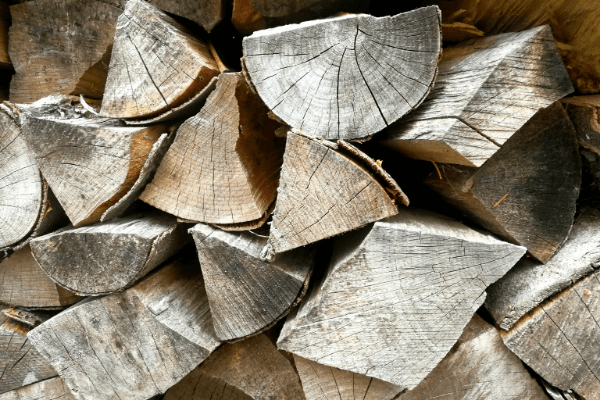
If you bang two pieces of dry firewood together you should hear a distinctive "ping" sound almost as if the wood was hollow.
However, if you bang two pieces of green firewood together it makes a "dull thud" sound indicating the wood is still wet.
Seasoned firewood should look old, gray and somewhat ugly like the photo above.
If it looks fresh, clean, and bright it's probably wet and needs longer to dry.
Seasoned firewood often feels lighter than unseasoned wood, too.
It might feel warm and dry instead of cold and damp.
Of course, you can always test out how well-seasoned a piece of firewood is by throwing it into the fire.
Just make sure your fire is already super hot before adding the wood.
If the wood is wet, it will steam and sizzle, while dry wood should ignite almost instantly.
How To Dry Wet Firewood
In order to dry out a piece of wet firewood you need 3 things.....time, wind and sun.
All are free but require some planning on your part.
Stack your firewood off the ground in a spot where the wind can blow throughout the stack drying out the wood.
The summer sun works great so consider stacking your wood in a spot that receives plenty of direct sunlight.
Try to choose a location that provides sunlight as well as wind exposure.
Damp wood will rot, wood that is placed in these conditions will dry.
Stack your wood in long rows, if possible, to speed up the drying.
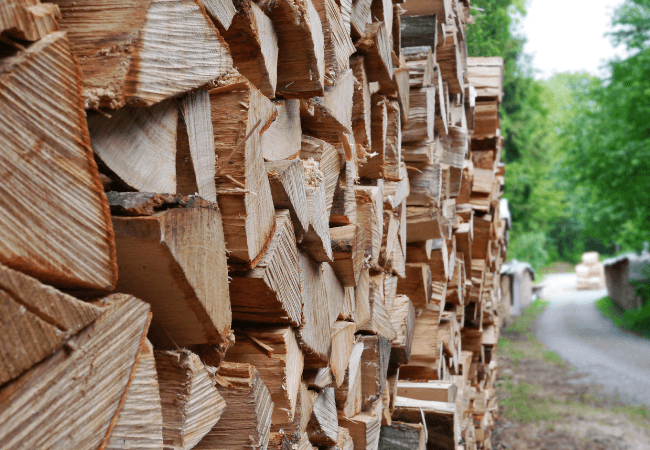
Bunching up your wood in bulky piles will
prevent the air from getting into all the nooks and crannies of the wood and
will slow your drying time.
You may find that you need to cover the top of your firewood stack.
This will prevent too much moisture from getting inside.
The best thing to do when seasoning your firewood is to put it in a two-sided shed or lean-to; that way, air can still get to the firewood but it will be protected from the elements.
How Long To Season Firewood
Finally, no matter what you do firewood needs at least 6 months to season.....preferably 1-2 years depending on the species and climate.
This is often the hardest lesson for any beginner.
We've all tried to burn firewood before it was ready and every time the results are the same.
Wet firewood does not burn!
Which Types Of Firewood Season The Fastest?
In general, softwoods will dry faster than most hardwoods.
However, they’ll also burn faster (and at a lower temperature) so there is a tradeoff here.
Use a moisture meter to check the moisture content of your logs, as seasoning time sometimes has less to do with the firewood species and more to do with how and when the wood was cut and stored.
That said, species like willow and pine dry the fastest.
Again, though, you’ll need a lot of these two species to keep you warm, since they don’t burn as hot.
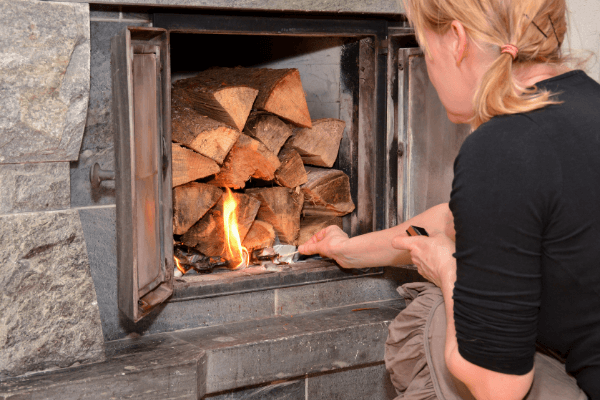
When it comes to
hardwood species, you’ll want to stock up on ash and silver maple.
These tend to dry faster than other hardwoods, like oak.
Other relatively quick options include lodgepole pine and douglas fir.
Storing Seasoned Firewood
Don’t let all of your hard work go to waste!
Once you’ve seasoned your firewood, it’s important that you also take the time to store it properly.
Keep the sides mostly exposed to the air - don’t completely cover it but instead keep it off the ground with a top cover.
In general, you can store your seasoned firewood in the same conditions you kept it in while it was being seasoned.
Overall
Whether you're using hardwoods or softwoods, the wood you burn must be seasoned.
Seasoned firewood burns hotter, burns cleaner, lights easier and is without a doubt the best firewood choice!

About the Author
Obsessed with firewood, Nick is behind over 350+ of Firewood For Life's articles, as well as countless reviews, guides and YouTube videos to help readers like you reduce heating costs and create the perfect fire.


